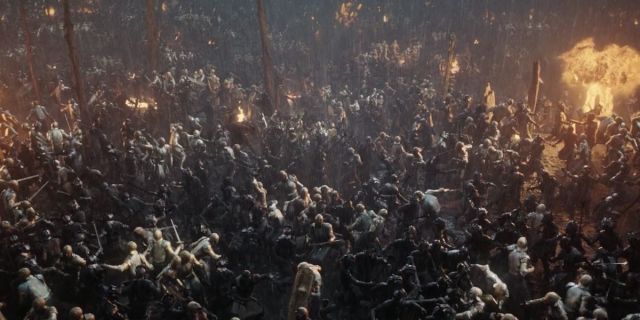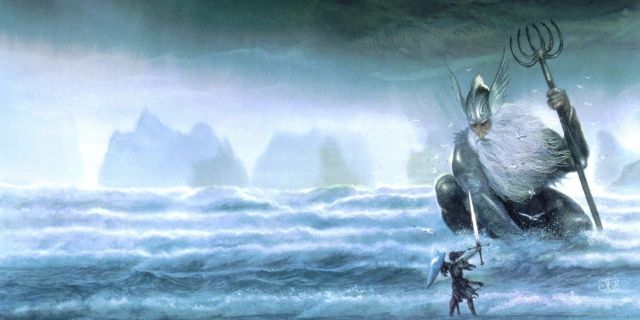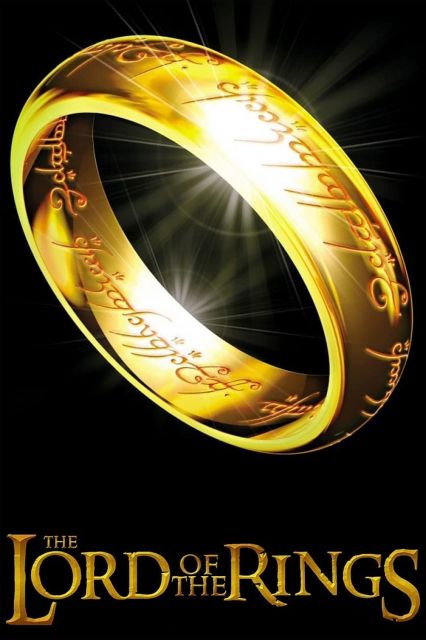Highlights
- The War of Wrath, also known as the Great Battle, was a defining war in Middle-earth’s history that marked the end of the First Age.
- The war involved the Elves, Men, and Valar (gods of Middle-earth) fighting against Morgoth’s forces.
- The war ended with Eärendil saving the day by defeating Morgoth and his winged Dragons, resulting in the destruction of Angband and the sinking of much of Middle-earth.
While part of the appeal of Lord of the Rings is the detailed worldbuilding and complex characters, the events of the plot itself are also exciting enough to pique people’s interest. More specifically, the war stories that permeate the history of Middle-earth are something that a lot of fans find themselves drawn to. There are multiple well-known battles that happen within the confines of The Lord of the Rings and The Hobbit, but the lore and history that Tolkien created for Middle-earth is incredibly extensive and includes mention of even more big battles.
One of the defining wars in the history of Middle-earth was the War of Wrath, also known as the Great Battle. This was the climactic battle between Morgoth and the forces of good, who had finally amassed enough power to oppose him. It’s a major event in the lore of Middle-earth that even changed the shape of the land itself, but since it happened long before LOTR, not as much is known about it, and even big fans of Tolkien might not know the details. Why did The War of Wrath occur, and who exactly were the parties involved?
RELATED: LOTR: The Battle of the Powers, Explained
When Did The War of Wrath Take Place?

The War of Wrath took place in the First Age of Middle-earth, and was actually the event that marked the end of that Age. The specific years were around FA 545 – FA 587. By this point in the First Age, Morgoth had gained a lot of power within Middle-earth and his rule had so far gone uncontested. All of the efforts to resist him had failed, and he had control of pretty much all of Beleriand, the northwest part of Middle-earth. It didn’t help matters that the Sons of Fëanor – the sons of the great Ñoldorin King who had vowed to retrieve the Silmarils at any cost – had committed two Kinslayings that had wiped out the Elven dwellings of Doriath and the Havens of Sirion.
Who Was Involved In The War of Wrath?

The War of Wrath involved the Elves, Men, and Valar fighting against Morgoth’s forces. The Valar were the Powers of Arda who governed the world; in other words, the gods of Middle-earth. Morgoth, also called Melkor, was one of the Valar, and in fact was one of the most powerful until he was banished from their order. Things had gotten bad enough under Morgoth’s dominion that Eärendil journeyed to Valinor to plead with the Valar and ask for their help in liberating the peoples of Middle-earth from Morgoth. Manwë was moved by this plea and, along with the Vanyar and Ñoldor Elves that were still in Aman, came to Middle-earth with the biggest gathering of arms that had been seen so far in history.
These great forces of Aman met Morgoth’s armies in battle at the plains of Anfauglith, and Morgoth’s forces had grown so much that these plains could hardly contain them. The War was long, lasting for over 40 years, and the Valar fought valiantly against Morgoth’s Orc armies. Morgoth also had Balrogs in his forces, and they managed to defeat these as well. The Three Houses of Men fought alongside the Valar, while the Men from the East fought on the side of Morgoth and were either destroyed or forced to flee far away.
How Did The War of Wrath End?

The end of the War of Wrath began when Morgoth, on the edge of defeat, launched the final trick he had up his sleeve – winged Dragons, which were the first of their kind. Their force was enough to drive the Valar back and give a significant hit to the armies of the West. However, Eärendil saved the day by piloting his sky-ship Vingilot and bringing with him the Eagles of Manwë, who fought the Dragons from the air and managed to defeat them. Angband, Morgoth’s fortress, was destroyed and Morgoth was captured deep in his mines. He was taken to Aman and tried for his crimes, after which he was punished by being beheaded by the Valar and thrust through the Door of Night into the Timeless Void, the doors of which Ëarendil guarded.
The War had a huge effect on the geology of Middle-earth as it decimated most of the land west of the Blue Mountains, causing it to sink into the sea. Even though Morgoth was defeated, many of the creatures he had employed in his armies still roamed Middle-earth, such as the Orcs, who were under the control of Sauron. There were even Balrogs that had fled and rested under the earth (one of which makes an appearance in The Lord of the Rings). Most of the Elves that remained went into the West, and those that stayed behind (including Galadriel, Celeborn, and Elrond) became lords of the remaining Eldar. The Men who had fought with Valinor were given the land of Númenor for their contributions to Morgoth’s defeat.

The Lord of the Rings
The Lord of the Rings is one of the most iconic names in entertainment. The franchise started with novels from J. R. R. Tolkien before being adapted onto the big screen by Peter Jackson in one of the most critically-acclaimed film trilogies of all time. There have also been numerous The Lord of the Rings video games of varying quality.











Leave a Reply